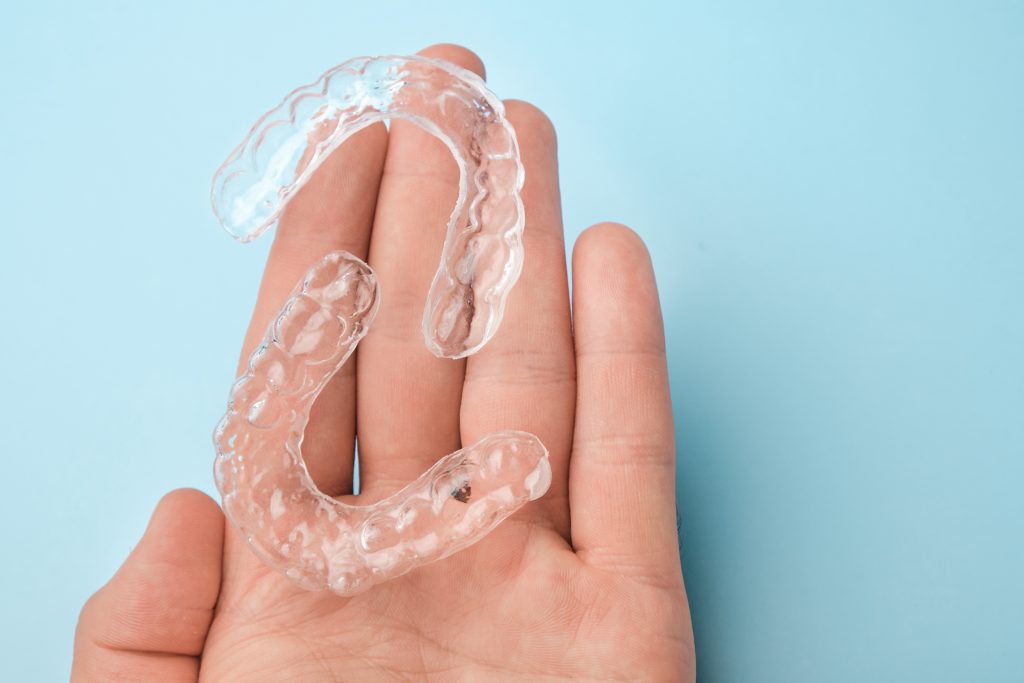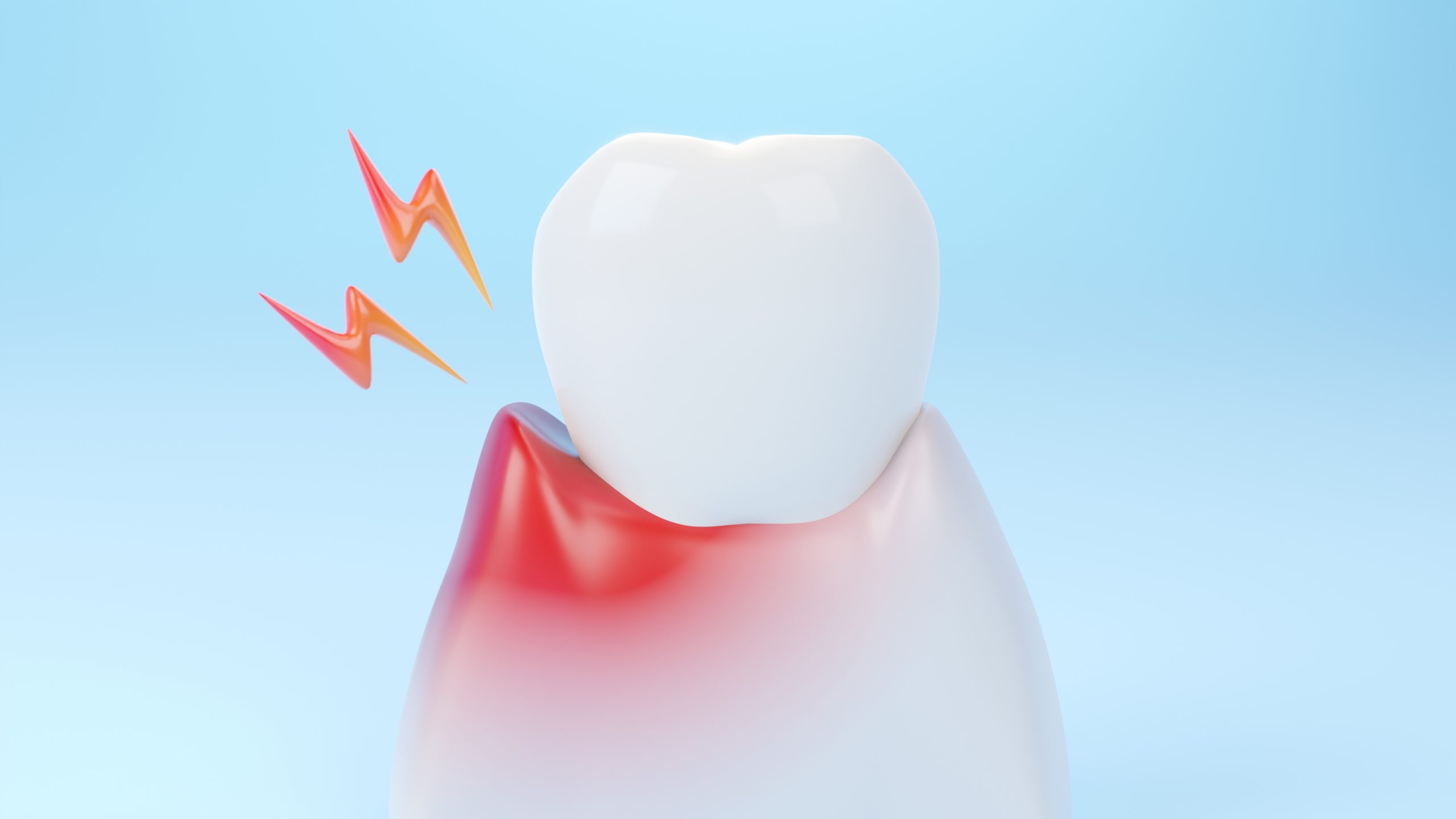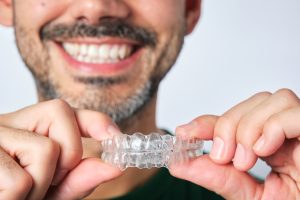Have you or a loved one been diagnosed with gingivitis? You’re not alone! Gingivitis is a bacterial infection that can lead to tooth decay and loss. Gingivitis is particularly prevalent in those with braces, who are more susceptible to the bacteria on their teeth. In this blog post I’ll outline what gingivitis is, the causes, symptoms, and treatments for it, as well as how invisible braces can help protect against it.
What is Gingivitis?
Gingivitis is a common form of gum disease that causes inflammation of the gums, and can be either mild, moderate, or severe in terms of severity. If left untreated, gingivitis can lead to more serious forms of gum disease, such as periodontitis.
Invisible braces can help protect against gingivitis by keeping the teeth clean and free of plaque and tartar. Plaque is a sticky film of bacteria that forms on the teeth. Tartar is a hard deposit of plaque that has hardened onto the teeth. Both plaque and tartar can contribute to the development of gingivitis.
By keeping the teeth clean, invisible braces can help prevent the buildup of plaque and tartar, which can help reduce the risk of developing gingivitis.
What Are the Symptoms of Gingivitis?
The symptoms of gingivitis can range from mild to severe, and can include:
- Swollen and/or tender gums
- Gums that bleed easily
- Bad breath
If you notice any of these symptoms, it’s important to see your dentist right away. Gingivitis is a reversible condition, but if it’s left untreated, it can lead to more serious and irreversible problems like periodontitis.
What Causes Gingivitis?
There are a few things that can cause gingivitis, but the most common cause is plaque. Plaque is a sticky film of bacteria that forms on your teeth. If you don’t remove plaque, it can harden into tartar, which is much harder to remove. Plaque and tartar can irritate your gums, making them red, swollen, and more likely to bleed.
Other causes of gingivitis include:
- Hormonal changes during puberty, pregnancy, or menopause
- Poor dental hygiene
- Certain medications that decrease the flow of saliva (which helps keep your mouth healthy)
- Illnesses that affect the whole body, such as diabetes or HIV/AIDS
- Family history of gum disease
If you have any of these risk factors, be sure to talk to your dentist about how you can prevent gingivitis.
What are the risk factors for gingivitis?
There are a few risk factors that can contribute to gingivitis:
- Poor oral hygiene. This is the number one factor that can lead to gingivitis. If you don’t brush and floss your teeth regularly, plaque will build up on your teeth and eventually turn into tartar. Tartar is a hard substance that can only be removed by a dentist or hygienist.
- Certain medications. Some medications can cause dry mouth, which can lead to gingivitis. Dry mouth happens when there is not enough saliva in the mouth to keep it moist. Saliva is important because it helps wash away food and bacteria.
- Dental appliances. If you wear dentures, bridges, or braces, they can trap food and bacteria against your gum line and lead to gingivitis. It’s important to clean these appliances daily and see your dentist or orthodontist regularly so they can check for any problems.
- Smoking. Smoking tobacco products can increase your risk for gingivitis and other dental problems. Tobacco products can cause your gums to become inflamed and make it difficult for them to heal after an injury or infection
What are invisible braces?
Invisible braces are a type of braces that are virtually invisible when worn. They are made of a clear, plastic material that is custom-fitted to your teeth. Invisible braces are becoming increasingly popular among adults and teens who want to improve their smile without the conspicuousness of traditional metal braces.
Invisible braces are an excellent choice for those who want to avoid the potential for gum disease associated with traditional braces. Because they do not rely on brackets and wires that can trap food and bacteria, invisible braces allow you to brush and floss normally, which helps reduce your risk for gingivitis and other types of gum disease. The aligner trays are also designed to sit above the gum line and should not irritate your gums while worn.

How do invisible braces protect against gingivitis?
Invisible braces are a type of clear aligner that is becoming increasingly popular among orthodontic patients. One of the main reasons why patients choose invisible braces over traditional braces is because they are easier to clean and less likely to cause gum disease. In fact, studies have shown that patients who wear invisible braces have a significantly lower risk of developing gingivitis than those who wear traditional braces.
Invisible braces work by gently moving the teeth into their proper position. This process helps to reduce the amount of plaque and bacteria that can build up around the teeth and gums. When teeth are in their proper position, they deflect food debris away, preventing plaque and tartar build-up.
Additionally, invisible braces are made of smooth, non-porous material that is much easier to keep clean than metal brackets and wires. As a result, patients who wear invisible braces are less likely to develop gingivitis or other types of gum disease.
Just remember to always practice good oral hygiene, whether you have invisible braces or not! If keeping your gums healthy is important to you, you may want to learn about invisible braces prices.
Tips for using invisible braces
If you are considering invisible braces as an alternative to braces, there are a few things you should know in order to maintain good oral hygiene. Invisible braces are made of smooth plastic and can trap food particles and plaque just like your teeth can. Here are a few tips to help you keep your teeth and gums healthy while wearing invisible braces:
- Brush your teeth at least twice a day with a soft-bristled toothbrush. Be sure to brush gently around your gum line.
- Floss daily to remove food particles and plaque from between your teeth and along your gum line.
- Rinse your mouth with water or gentle mouth rinses after eating or drinking. This will help remove any food or drink that may be stuck in your aligners.
- Clean your aligners regularly with a mild soap and cool water. Avoid hot water, as this can warp the plastic.
By following these simple tips, you can help protect your teeth and gums from gingivitis and other dental problems. Better yet, you can learn about how ALINA works to uncover your most beautiful smile.
Why you should choose ALINA for invisible braces
ALINA invisible braces are specially designed to allow wearers to truly uncover their smiles. Make ALINA your choice for your partner to a beautiful smile if you want a product with:
- Better materials – ALINA is made from a space-age, highly durable material with just the right amounts of flexibility and rigidity, to uncover your smile gently but effectively.
- Better technology – ALINA is powered by its AlinaSmile technology, which uses Artificial Intelligence to determine your most beautiful smile, according to your face shape and the world-renowned Golden Ratio.
- Better results – With more than 25 years of experience in the US and Canada, as well as thousands of patients’ beautiful smiles uncovered, the results of partnering with ALINA speak for themselves.
Book a consult today to begin your journey to your most beautiful smile!






